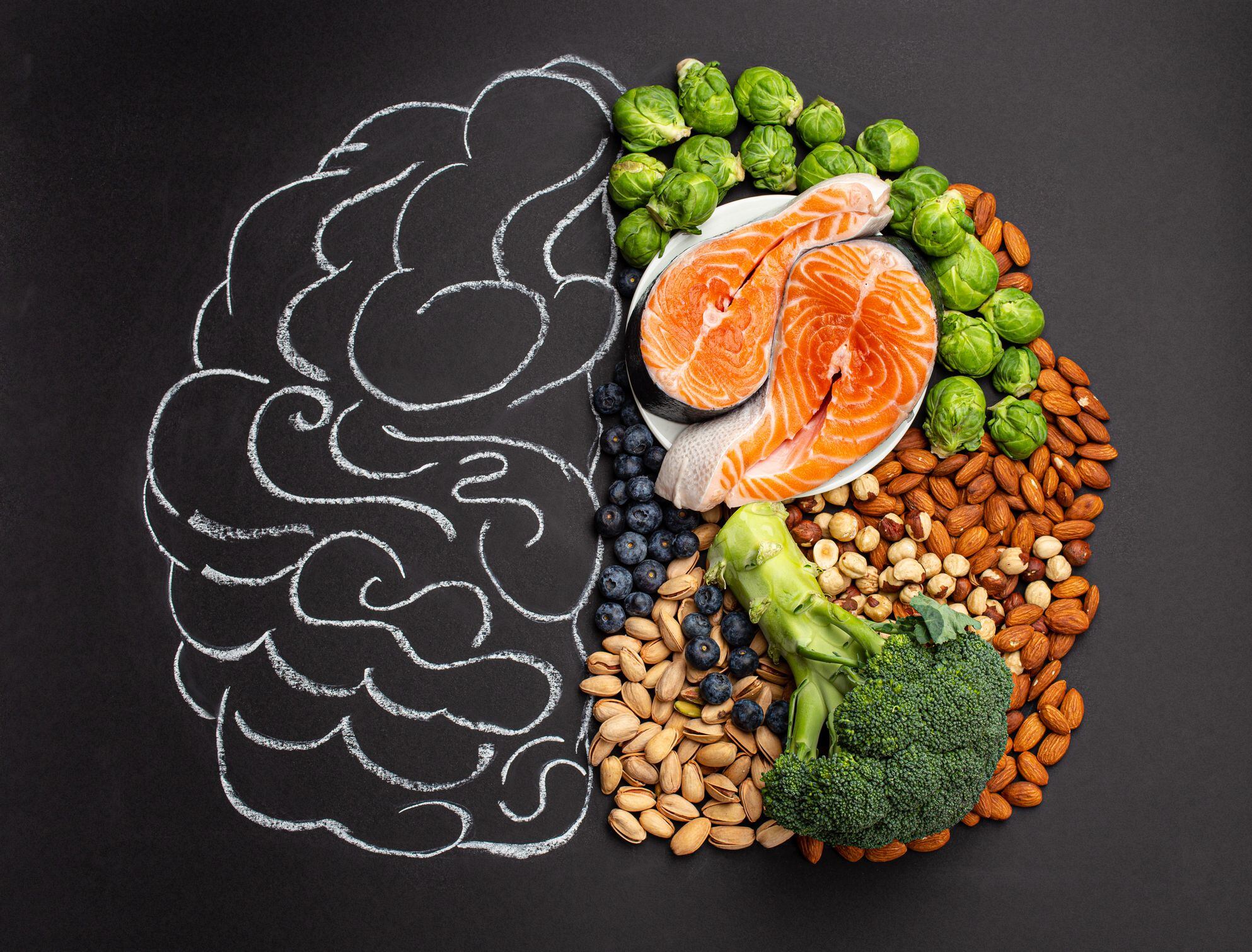Navigating Fast-Food
To one degree or another, we all know we should steer away from fast-food restaurants. It’s hard to completely avoid them though, they are everywhere, tempting us with pictures of mouth-watering burgers and crispy golden fries. And to be realistic, sometimes grabbing a quick meal on the go is convenient. When in those moments it’s helpful to have some guidance on what to lean on. We grasp that in general, the food is not healthy, but it is worse than I thought. So, mindfully choosing fast food means making informed choices with the smallest possible impact on our health while still enjoying the convenience.
The Truth
Overall, Americans believe that everything allowed in our food has been proven safe to eat. Many assume the FDA is ensuring the safety of all ingredients in processed foods. If any additives are found to be dangerous to human health, the FDA should be the one removing them from the food supply. However, this is not necessarily the case.
Many of the food additives deemed safe by the Food and Drug Administration have not been studied long enough. No one has studied the combinations and cumulative effects of all the food additives either. The FDA is sometimes not even aware that a new additive has been introduced into our food.
Food Babe
After being hospitalized due to health issues caused by a typical American diet, Vani Hari, currently known as The Food Babe, decided to make health her number one priority. Since 2011 she has been investigating what is in our food, how is it grown and what chemicals are used in its production. She spent thousands of hours researching and talking to experts. Shortly thereafter, she realized that it is a part of the food industry’s marketing strategy to confuse consumers with lengthy food labels. Most of the time we don’t check the list of ingredients and if we do, we can’t understand what most of it means anyway.
A Mission
Vani’s mission, which I appreciate and value, is to empower individuals to take back control of their health by providing as much information as possible about what is in our food. She advocates for full disclosure of processed foods’ list of ingredients as well as for some harmful additives to be banned from the food industry. Her investigations have been backed by a group of cutting-edge health experts, who have not been corrupted by the food and chemical giants. I admire her goal of holding corporations accountable for their actions.
Generation Alpha
According to the Centers for Disease Control and Prevention (CDC), a child born in the US in 2021 is expected to live approximately 76.4 years, which is the lowest figure since 1996. This means Generation Alpha is the first generation forecasted to NOT outlive their parents. Compared to other wealthy industrialized nations, particularly in Europe, U.S. life expectancy is not only lower but is also getting worse – according to Rob Garver, a VOA freelancer journalist. Voice of America (VOA) is the oldest state-owned news network and international broadcaster in the United States.
What Can Be Done
There is a way to turn this ship around. Especially because now we know there is a correlation between diet & lifestyle and the massive increase in chronic diseases like diabetes, cancer, and mental health issues in children and adults alike. The understanding of what’s in the food we’re eating is one part of the solution. The other part is to learn how to use your money wisely. By choosing the cleanest options you’re using your consumer power to pressure fast-food chains as well as big food corporations to do better.
Overseas
What Vani found in many of her investigations is that in other countries, especially in Europe, some fast food chains have already changed their recipes due to public pressure. Well, most of those countries also have public health systems. Overseas’ doctors and researchers have been noticing the same correlations between diet, lifestyle, and chronic diseases as American doctors. The difference lies in their government’s commitment to the solution as they are the ones paying the bill.
I don’t know about you but, I believe it’s easier to use my power as a consumer than to start a movement pro-public health care system in America.
Mindfully Choosing
That’s why it’s relevant to mindfully choose fast food, or any processed food for that matter. Many chains now offer healthier alternatives, including salads, grilled options, and customizable bowls. So, before committing to your favorite fast-food restaurant, make sure the chain has healthier options. Even if you’re not planning on having the salad, adding those options to the menu shows the company’s commitment to do the right thing. Don’t get tricked by the calorie comparison, though. Some fast-food salads have almost the same number of calories as a small hamburger.
Calories Are Not the Same
Keep in mind calories are not created equal. A salad with vegetables and fruit will always be a better option than a burger and fries, regardless of the number of calories. Always think of quality over quantity. Good quality calories help to heal the body and increase metabolism. Poor quality ones, on the other hand, can make you sick. Choose your calories wisely, using the nutrient-density concept which refers to the concentration of essential nutrients, such as vitamins, minerals, protein, fiber, and healthy fats, in a given food relative to its calorie content.
The Meat
The number one common problem in most fast-food chains is the quality of the meat. Although McDonald’s claims to use 100% real beef with no fillers, additives, or preservatives, they still get most of their meat from factory farms. The famous In-N-Out Burger, for instance, get its meat from Harris Ranch, one the largest concentrated animal feeding operations (CAFO) on the West Coast – where cows can be seen crowded and walking in their own excrement. Besides being terrible for the animals and the environment, those establishments treat animals with daily doses of growth hormones and antibiotics so they can survive their poor life conditions.
Choose Mindfully
Research shows residue of growth hormones in the meat has been linked to cancer. So have been artificial colors and food additives used by fast food to mask the poor quality of ingredients. They trick our senses by making the food look and taste better by adding harmful chemicals. Some of these are not even disclosed in their ingredient list, which alone is a red flag. As nobody is going to ask for an ingredient list before deciding what to eat, I thought it’d be helpful to share some of Vani’s investigations.
If you don’t eat fast food, great! You might not need this information but, please share it with someone you love who might benefit from it. I’m definitely not supporting anymore the following restaurants:
In-N-Out Burger – not only the meat is from factory farms but, their fries are fried in GMO cottonseed oil, their buns are made with fully hydrogenated soybean oil, and their sauce is made with high fructose corn syrup and yellow #5 artificial color. Their complete list of ingredients is top secret. Check the full article here.
McDonald’s – 8 out of the 12 questionable chemicals listed as ingredients on their products in the US were banned in England. Red flag! They also serve organic milk and don’t use GMO ingredients overseas – all while serving GMOs here in the States.
Starbucks – uses milk from cows fed GMO corn and soy, artificial colors like caramel color level IV, tons of sugar, artificial flavors, and preservatives. Vani had a hard time finding full disclosure of their ingredients.
Taco Bell – the bean burrito contains possible GMOs, TBHQ preservatives, hidden MSG additives, and other nasty processed food chemicals. After a 2011 lawsuit Taco Bell published that their beef is 88% beef and 12% of a secret ingredient!
Chick-fil-A – recently made a huge commitment to go antibiotic-free in a 5-year time frame, what’s huge! But, in the meantime, they’re still serving factory-farmed chicken treated with antibiotics besides using a considerably long list of chemicals in their sandwiches.
Subway – also uses factory-farmed, antibiotic-raised chicken coated with the preservative sodium benzoate. Which becomes a carcinogen when combined with ascorbic acid, an ingredient in Subway’s Flatbread. Another wide variety of chemicals is used in their bread, more here in the US than in Europe.
Burger King – tried to deceive the public by posting a long list of banned ingredients that was full of duplicates. Their fries are coated in “Sodium Acid Pyrophosphate” (which keeps the frozen ones from turning gray) and unhealthy vegetable oils like Canola Oil and Soybean Oil.
“Better” Options to Keep in Mind
It’s not easy to find a fast food restaurant that uses good quality ingredients. After all, there is no secret to making money selling $5 Big Macs. Besides paying the lowest wages in the country, fast food chains take advantage of the cheapest ingredients. I just want to make you aware of all that. If we all could be conscious consumers and support companies that are doing the right thing, it’s a good start. Whichever values something other than money is worthy of my dollars.
Unfortunately, there are not many wins in this battle so far but, if we keep pushing fast-food chains in the right direction, we can have a different scenario in the future.
Chipotle – recently posted the list of all ingredients used in their food. Although using GMO vegetable oils for cooking, their meat and dairy are hormone and antibiotic-free. There are no artificial colors or hidden MSGs in the list.
Panera Bread – removed 150 different food additives from their food back in 2016 – including artificial colors and preservatives. Although still using some controversial vegetable oils like soybean and canola, they are showing progress.
Consider Portion Sizes
As there are not a lot of good options, it’s nice to have other strategies up the sleeve. Portion size is a good start. Many menu items come in oversized portions that can contribute to excessive junk intake. Consider sharing a meal with a friend or opting for smaller portion sizes when available. You can also consider skipping the drink. Soft drinks are not only a source of calories but carry tons of harmful chemicals. It’s not even good to drink while eating, anyway – not even water.
Dessert
Another good strategy is to skip dessert. I know! Cookies are so good. If you cannot resist it, save it for later or share it. Same thing you can do with ice cream or milkshake. That will help you in many ways including blood sugar balance and nutrient absorption. Calcium from the ice cream decreases the iron absorption from your burger, for example. If there is an option for fruit as dessert, that would be a good choice to satiate the sugar cravings. If chances are you’re having the salad, use just half of the dressing in that pouch. Or better yet, ask for olive oil. Salad dressings are loaded with added sugar.
Practice Mindful Eating
Another helpful tip is to take the time to eat mindfully. I know we’re talking about having a meal on the go but, at least slow down and savor each bite. Pay attention to the flavors, textures, and sensations of the food. Eating slowly can help you tune into your body’s hunger and fullness cues, preventing overeating and promoting better digestion. Even if it’s fast food. Maybe if you listen to your body carefully you will realize that fast food does not make you feel good after all.
Final Comments
Navigating fast food with mindfulness is all about finding a balance between health-conscious choices and occasional indulgence. By approaching the subject with awareness of ingredient quality, nutritional value, and portion sizes, you can make informed decisions that support your well-being while still enjoying the convenience and occasional treat. Remember, it’s not about perfection but about making the best choices available in any given situation. So, allow yourself to savor a Whopper or a Chalupa guilt-free every once in a while.
After all: Good is what makes you feel well!
Anna.

Anna Resende
Integrative Nutrition Health Coach
Certified by IIN - Institute for Integrative Nutrition
Every week I send out my newsletter called Mamma’s Tips where I share health and wellness topics, good books, recipes, and more.
Click below to subscribe!
I’m excited to share that I just published my first e-book
A Weekend of Feeling Great!

In this book, you’ll find all the steps you can take to feel great. Besides all the foundational principles of multidimensional health, it has a sample of a productive daily routine and a two-day menu with 10 healthy recipes for you to try.




